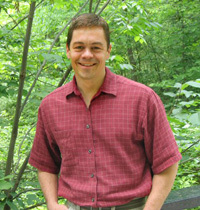Department: Earth Systems Research Center, and Natural Resources and the Envronment
8 College Road
Durham, NH, 03824

Research Interests
Scott Ollinger conducts research on carbon and nitrogen cycling in forests with emphasis on basic ecological processes and interactions with human-induced environmental stressors. Specific research activities include projects that involve spatial and temporal patterns of forest biogeochemistry; forest-climate feedbacks; modeling the effects of air pollution, rising CO2, disturbance history and climate change on ecosystem processes; and scaling local measurements to regional and continental scales. Ollinger is Principal Investigator on several projects that are part of the North American Carbon Program. He is a co-invetigator with both the Hubbard Brook and Harvard Forest LTER projects where his primary roles have involved regionalization. He serves or has served on a variety of editorial boards and science advisory panels and has participated in two of the Hubbard Brook Research Foundation’s Science Links Projects.
